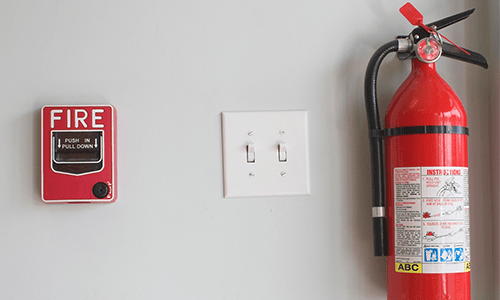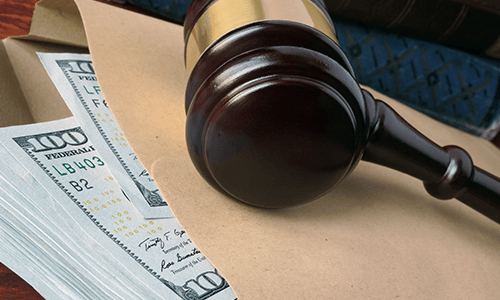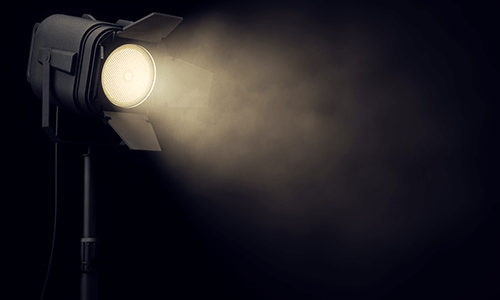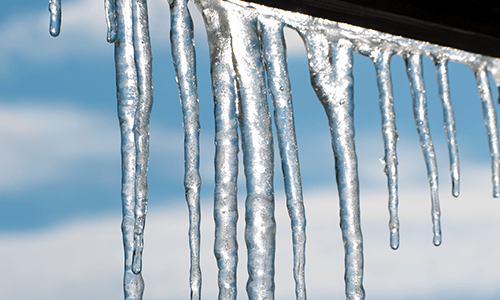Annually, as Fire Prevention Week approaches in October, billboards, public service announcements and the like pop up and heighten our awareness about the dangers of fire. Maybe your local fire department had an open house, and the kids learned about what to do in a fire. All these things spark greater than usual interest, maybe even curiosity toward the subject. Fire safety around the home tends to get the spotlight in October, but fire and its insidious exponential growth needs to be considered from a more global perspective when society considers the acceptable standard of care for citizens.
What is Fire?
“Fire: a state, process, or instance of combustion in which fuel or other material is ignited and combined with oxygen, giving off light, heat, and flame”– Dictionary.com
Fire, at first glance, seems to be a simple and understandable phenomenon. In reality, fire is a highly complex reaction in which variations of fuel, heat, available oxygen and other factors produce distinctly different scenarios. Accidental fires can inflict a full spectrum of damage, from total destruction of wood, masonry and steel to the checking of furniture finishes and the chemical alteration of textile dyes. The effects of heat, smoke residues, odor, water damage and corrosion are some of the mechanisms involved in a fire damage scenario. The performance of fire damage repair requires that the restorer understand the various modes of damage in order to evaluate their effects on building components and personal property. When conditions suggest that the integrity of structural elements may have been compromised, the restorer should be able to recommend specialists and test procedures that can establish the degree of damage and appropriate remedies.
Fire damage occurs with a wide range of severity, from minor smoke damage to the total destruction of a building and its contents. For its victims, fire damage extends from temporary inconvenience to major tragedy. Whatever the severity, most victims of fire damage find themselves in unfamiliar territory. In addition to the disruption of their customary patterns, they must make numerous decisions that may have a long-term impact on their personal and financial affairs. In most instances, they lack a sound basis for making those decisions. You are in a position to help the property owners.
Every fire damage situation is unique; there are no truly typical occurrences. However, general categories of fire severity might be considered, under the headings of: Light, Moderately Severe, Severe, and Very Severe damage. These categories are selected arbitrarily for purposes of discussion. In fact, many fires (within the same property) create areas with severe, moderately severe, and light damage. Of primary importance is the fact, to the fire victim, any degree of damage is likely to be considered severe.
- Light damage: the damage consists of loose fire residues which can be remedied by cleaning the walls, ceilings, doors, and contents. Residues may be confined to specific areas, often far removed from the fire itself. No painting or replacements are required.
- Moderate damage: the damage consists of more intense or persistent fire residues which may be remedied by restorative cleaning procedures (restoration), painting, and floor refinishing. Localized heat damage may require replacement of a burned cabinet, appliances or drywall. Fire odors may be minor or severe. Some fires, such as those involving carbonized meat or poultry, generate little or no visible smoke or residues, but leave persistent, obnoxious odors. Other materials, such as plastics, may generate extensive residues from a small quantity of fuel. Personal property requires surface cleaning where residues are present, and can largely be handled on site.
- Severe damage: fire damage has occurred to structural materials such as framing, and millwork, and finishes near the fire source. Heavy deposits of carbon and smoke residues cover a wide area. Odors may be extremely obnoxious, particularly from confined, oxygen-starved fires. Enclosed wall and ceiling cavities may be infiltrated by smoke. Some contents may not be restorable by on-site methods. Repairs involve the coordination of multiple trades.
- Very severe damage: fire damage to major building elements, such as floor or roof framing, heating and ventilation, and/or utilities. Such damage often requires temporary repairs such as board-up, winterization, temporary electrical repairs, or removal of salvageable contents. Very severe fires may involve extensive water damage from fire suppression efforts or damaged water lines. Licensed contractors, building permits and code inspections are required.
At every level of severity; heat, fire residues, and the disruption of normal building systems alter the building environment. Considerations of health, as well as value, require that all restoration work be completely and properly executed. Many times the first step in a fire restoration project is water removal and drying wet building materials. Due to the presence of water from the suppression of the fire or from compromised plumbing, fire and water restorations are related. All of the primary and secondary challenges associated with water restoration can be found in a fire restoration project. Examples are degradation of structural components, contents, corrosion of metallic surfaces and microbial growth. An added complication is that waterborne smoke odor may penetrate even more deeply into porous materials.
In locations where water has been used to extinguish the fire, the water will migrate through the structure and wet building materials. During this process, the water becomes contaminated with innumerable materials. Excess standing water should be extracted thoroughly. Some buildings are so full of water that special pumps are required to remove standing water. Where possible, wet surfaces should be treated with a broad-spectrum, government-registered disinfectant to control the growth of microorganisms. All personnel should follow label directions when using EPA-registered products.
Sprinklers: What is “Code”?
Over the last twenty years in particular, the City of Chicago has suffered more than its fair share of acrimony over fire protection issues. The pattern has become predictable; tragic loss of life due to fire, public outcry, helicopters and headlines then in an instant it’s over, the aftermath is yesterday’s news. But why does the pattern persist? The technology to resist already exists. The answer is simple: those that quietly influence policy, both public and private, elect not to invest resources in ways that would affect more permanent change, as if it were some fiduciary responsibility that takes precedence.
We are always attracted to the bright shiny object, a huge inferno is big news but integrated building systems working as they are designed, averting certain tragedy is pedestrian, expected. In fact, it’s worse; take a fire sprinkler system for example, when a sprinkler saves the day that is hardly a story but the collateral water damage is still newsworthy. God bless those first responders that redirect the news media focus back to the saved lives and property.
Despite how we tend to take them for granted, fire sprinklers found their way into the model building codes mostly legislatively, “written in blood” as they say. However, the International Building Code (IBC) and the National Fire Protection Association (NFPA) Building Code, recognizing the astounding reliability of fire sprinklers, took steps to “trade off” the installation of fire sprinklers for certain advantages to the builder and removed the financial burden of incorporating fire safety. Reduced fire separation rating of walls, increased exit distances, greater building heights among others depending on the occupancy or Use Group involved all proved to be unparalleled cost-effective incentives. Overall construction cost was reduced and public safety enhanced. Win-win.
But what about the Chicago Building Code (CBC) in this regard? The CBC is a one-off code that resembles no other. The central fire protection concept relies on “compartmentation” or containment of a fire to the room of origin. This could be unlucky if you are in that room, but that aside, in general the concept works until there is a breach in the compartmentation. Think 3130 Lake Shore Drive, in that 2012 fire the inhabitants in the apartment of fire origin wedged the self-closing, fire rated door open because their stubborn cat wouldn’t flee with them. As you may recall that outcome was sadly fatal for another resident.
Many of us enter unfamiliar places all the time oblivious to where the exits are and take for granted that we will somehow be “safe”. But are we really? In most places in the United States there is a fairly high benchmark for acceptable public safety. Clearly marked exits, fire rated construction, fire alarm and detection systems – passive fire protection – plays its important role in keeping us safe, but none of those can actually put out a fire. Active fire protection – sprinklers – have been standing by and preemptively putting out fires for 150 years. Suburban Chicago has mainly adopted the IBC and consequently has active fire protection to a much greater degree than Chicago proper. Unfortunately, the City of Chicago is where most of the tall, dangerous buildings exist. The same ones we think nothing of wandering into.
Since 1975, fire sprinklers have been incorporated into the CBC for buildings greater than eighty feet in height. Here is what you won’t believe; many buildings are intentionally built to seventy-nine feet to avoid fire sprinklers. Why? Unbelievably because there is no financial incentive to do otherwise. So Chicago, the first city to build a high rise allows residential midrise buildings to persist without fire sprinklers. Pondering this a few years ago, our local fire sprinkler association had a creative solution and informally advanced the idea to get feedback: Why not allow a denser, more intense use of a given piece of land when sprinklers are properly incorporated voluntarily? Smaller yard setbacks, more attractive F.A.R. values, the works. Keep the CBC intact, but also create a new financial incentive to include active fire protection! Another win-win, right? We thought so. Informally our great idea was shot down because it involved two distinct bastions of power, the Department of Buildings and the Department of Planning and Zoning. It could never work because two worlds would collide, or something like that.
So one big idea withered but the concept persists, where is the financial incentive to encourage builders and developers to do the right thing? Back to that Fire Prevention Week open-mindedness mentioned at the top. In 2010 the National Fire Sprinkler Association (NFSA) published a white paper entitled, Fire Sprinklers Save Lives and Money, the Economics of Retrofit. This publication identifies six distinct economic offsets to the expense of retrofitting older buildings with fire sprinklers. While the paper makes an excellent case, it requires access to the authentic financial details of a property to actually be useful. Open-mindedness notwithstanding the concept didn’t go viral.
It is prejudicially understood by property managers, condo associations and the like that fire sprinkler retrofit is prohibitively expensive. Several years ago when the State Fire Marshal attempted to upgrade the state recognized version of the Life Safety Code from the 2000 edition to the 2012 edition, the city convulsed under the specter that fire sprinkler retrofit in residential high rises would become mandatory. Estimates of $25 to $40 dollars per square foot were tossed around like facts. The rancor was so belligerent that our industry message of $4 to $6 per square foot ($8 to $12 with soffits and alarm tie-in) could not or would not be heard.
The ironic side note to the last paragraph is that the Code in place already bestows the Fire Marshal with that dreaded authority. The really astonishing aspect of that time was the fervor with which people rabidly rejected their own life safety based on completely made-up nonsense perpetuated by the same behind the scenes guys that always oppose. The State Fire Marshal was defeated and nothing changed, except perhaps the currency with which unwitting city dwellers might ultimately pay.
Generally, we are so well-protected by our building codes that we are lulled into complacency with an expectation that the standard of care has been met. But the take away here is just how vulnerable our circumstances can become when we are not paying attention. Even totally noncombustible structures can burn their synthetic furnishings into an inferno. Our success is that technology already exists to address fire safety where it is inadequate but our challenge remains the same; creating the financial incentive and political will to get it done.
Safety – Food for Thought!
- Over 80% of fire deaths occur in the home (that’s about 2,500 people each year). You have only 3 minutes to escape a home fire. Fire sprinklers can stop a fire in 1.5 minutes. Fires burn fast and kill quickly because of the raw materials now used in modern building construction and furnishings.
- Smoke alarms alert occupants to the presence of danger, but do nothing to extinguish the fire. – Having a working smoke alarm cuts the chances of dying in a reported fire in half; with sprinklers present, the risk decreases by about 80%. Fire sprinklers save lives, reduce property loss and can even cut homeowner insurance premiums. – Home fire sprinklers can contain and may even extinguish a fire in less time than it would take the fire department to arrive on the scene. Installing both smoke alarms and a fire sprinkler system reduces the risk of home fire death by 82%, relative to having neither. Only the sprinkler closest to the fire will activate, spraying water directly on the fire. Ninety percent of fires are contained by just one sprinkler. Nationally, on average, home fire sprinklers add 1% to 1.5% of the total building cost in new construction. Modern residential sprinklers are inconspicuous and can be mounted flush with walls or ceilings.
- A family escape plan is essential. Here’s how to create one and to practice using it with your entire household. Draw a map of your home (PDF*), mark two exits from each room, and a path to the outside from each exit. – Practice your home fire drill twice a year with everyone in your home. Conduct one at night and one during the day and practice using different ways out. Teach children how to escape on their own in case you can’t help them. Make sure your house number is clearly marked, making it easy for the fire department to find you. Close doors behind you as you leave – this may slow the spread of smoke, heat, and fire. Once you get outside, stay outside. Never go back inside a burning building. Regularly clean washing machines/dryers: the leading cause of home washer/dryer fires is failure to clean them.
- Install smoke alarms in every sleeping room and outside each separate sleeping area. Install them on every level of the home, test them at least once a month and make sure they are interconnected (when one sounds, they all sound). Have a fire extinguisher for immediate use on small fires, and know how to use and maintain them.
*Fire Safety Facts provided by FireAdvocates.org.
By: Tim Farmer, USA Fire Protection and Fred Schroeder, J.C. Restoration




 CAI - Illinois Chapter
CAI - Illinois Chapter 



